By: Ir Heri Budianto, lecturer at Abdullah bin Masud Islamic College (STISA ABM)
The impact of damage caused by Israeli aggression in Gaza is very massive. According to data from the Palestinian Central Bureau of Statistics (PCBS), during the period 7 October-18 December 2023, 25 hospitals were destroyed due to attacks.
In addition, 126 schools were partially destroyed, and 75 schools were completely destroyed. Other buildings were 126 government buildings, 112 mosques and 3 churches. PCBS also estimates that the Israeli attack has damaged 254 thousand housing units in Palestine, 52 thousand housing units completely destroyed, and around 25 thousand other building units destroyed.
Analysis of satellite data shows that nearly 98,000 buildings across the Gaza Strip have suffered damage and most of it is centered in the north, as shown in the map published by BBC Indonesia below.
Also Read: The Forty-Four-Days of Glory: Azerbaijan’s Struggle for Justice and Peace
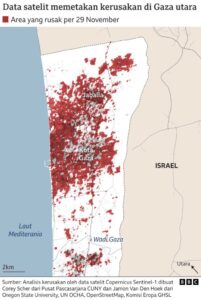
The red color is the area damaged by Israeli aggression as of November 29 2023. Of course, until this article was published, the damage was already greater because Israeli bombing of Gaza was still continuing.
On Wednesday (20/12/2023), Hamas Political Bureau Chairman Ismail Haniyeh led a delegation to Egypt to hold a meeting with Egyptian Intelligence Chief Abbas Kamel. Hopefully, with the mediation of Egypt and Qatar a permanent ceasefire will be realized. To restore life to the people of Gaza, it is necessary to rehabilitate and reconstruct areas destroyed by Israeli aggression in Gaza as soon as possible after conditions return to peace.
The rehabilitation and reconstruction aims to stimulate the recovery of areas affected by war disasters, while the target is to increase recovery after the disaster of Israeli aggression in Gaza. This is the main agenda of the Palestinian Government and countries that have been active in providing assistance to Palestine, including Indonesia. Carrying out the restoration of Gaza so that the people’s lives can return to normal life.
Also Read: Palestine Solidarity Month: A Collective Movement for Al-Aqsa and Palestine’s Freedom
Rehabilitation is the improvement and restoration of all aspects of public/community services to an adequate level in post-war disaster areas with the main target of normalization. The implementation of normalization is proceeding naturally so that aspects of government and community life are as they were before the war disaster occurred
Reconstruction is the rebuilding of all infrastructure, facilities and institutions in post-war disaster areas with the main target of the growth and development of economic, social and cultural activities, the upholding of law and order and the revival of community participation in all aspects of life. According to the author, there are at least two sectors of rehabilitation and reconstruction which are the focus and priority in handling the problems of the impact of the war disaster in Gaza, namely:
Settlement Sector. It is such as housing, flats, hotels, apartments, dormitories, etc
This sector is a priority because 70% of Gaza’s population is now refugees. There are 1,576,000 Gaza residents who have fled, with details of 742,000 taking refuge in UNRWA refugee posts, 570,000 in relatives’ homes, 142,000 in government refugee posts and 122,000 in hospitals and churches, quoted from databoxs (08/12/2023).
Infrastructure and public infrastructure sectors such as hospitals, educational facilities, government and private offices, power plants, telecommunications facilities, clean water facilities, roads and bridges. Functionally, infrastructure, apart from facilitating, plays a role in supporting the smooth running of community economic activities. For example, the presence of well-functioning roads and bridges can facilitate transportation for the distribution of goods and services to their destination. Either the market or reaching the people of Gaza who need it
Also Read: Hassan al-Turabi: A Controversial Thinker from Sudan
Indeed, implementing rehabilitation and reconstruction programs requires studies. Assess what needs are needed to carry out these activities. The assessment includes identification and calculation of physical and non-physical damage due to aggression. Identification concerns aspects of human development, public infrastructure, economic and social infrastructure, housing or settlement infrastructure.
Impact analysis involves reviewing the relationship and aggregate value of the consequences of war disasters and their general implications for the physical and environmental, economic, psychosocial, cultural, political and good governance aspects of Palestine in the future (Good Governance). According to the concept of the United Nations Development Programs (UNDP), the characteristics of Good Governance include: participation, rule of law, transparency, responsiveness, consensus orientation, equity, efficiency and effectiveness, accountability and strategic vision.
Steel Structure as an Option
The definition of a steel structure is a metal structure whose main material is made from steel components and is arranged in a structured manner with each other with the function of supporting the load so that it can be stronger and sturdier.
Also Read: Who Exactly is the RSF Group Shaking Sudan?
Steel structure building depictions are more commonly seen in modern construction. This structure is especially suitable for use in multi-story buildings, heavy industrial buildings, towers, bridges and other infrastructure. In Gaza, as is common in the Middle East, buildings are vertical (storied) buildings.
The steel structure material itself actually comes from carbon and iron. Apart from that, it is equipped with other complementary materials such as chemicals, manganese and mixed metals, manganese and special chemicals. The goal is to increase the durability of the steel itself and increase its strength.
Several Advantages of Steel Construction
1. Faster work
Also Read: The Two-State Solution (Palestine–Israel) in Historical Perspective
Steel construction is easier to assemble and speeds up the building process so it is widely used. In the construction of buildings that require time efficiency, steel construction is an option, because it can help reduce time during construction.
So, it is natural that for the construction of large buildings with urgent use this type of construction is a mainstay. The 1,576,000 displaced Gaza residents need immediate treatment to be returned to their homes. To normalize their lives.
2. Steel has high durability
One of the main reasons steel is used in so many construction projects is its durability. This material has the highest strength to weight ratio of any other building material. The most important property of steel in its use as a construction material is its high strength, compared to other materials. Steel is a mixture of iron (Fe), 1.7% charcoal or carbon (C), 1.65% manganese (Mn), 0.6% silicon (Si), and 0.6% copper (Cu), steel is ideal for buildings both large and small. Steel is also fireproof. This material is not flammable if a fire occurs.
Also Read: Enchanted by K-Dramas, Dragged into Slander: Time for Muslims to Rise!
3. Durable material
Steel is a material that will not rot, split, crack, warp, twist, or break. With all these benefits, steel is also a material with high durability and low maintenance. Its use can also increase the value of property owned, including houses, business buildings, offices and factories. Apart from strengthening, steel is also used as a framework. So, many modern buildings reference this material.
4. Steel can be recycled
With these advantages, steel is an environmentally friendly material. In fact, not many metals can be recycled. Steel is a special one, which can be recycled for reuse. This process does not damage or weaken the steel, in fact it can make it an ideal material for continuous reuse. As we know, Gaza is an area prone to conflict. Of course, we both pray and hope that peace will soon be established in Gaza.
Also Read: Creating Opportunity and Avoiding Misery; Lesson Learn on Waste Recycling Issue
5. Earthquake resistance
Earthquakes cannot be predicted in terms of frequency, duration, and location. Steel is the material of choice for design because it is ductile and flexible. In certain constructions, many beam-to-column connections in steel buildings are designed primarily to support gravity loads. This material also has sufficient capacity to withstand loads caused by wind and earthquakes.
6. Lighter when used
Steel structures can be significantly lighter than concrete. This can help in reducing the environmental impact of the building.
Also Read: Between the Treaty of Hudaybiyyah and Ceasefire in Gaza
The above advantages will of course be obtained if the steel construction is designed to meet the criteria of strength, serviceability and economy. Streght Relates to the general capability and safety of a structure under extreme loading conditions.
Serviceability refers to the proper functioning of a structure, related to stability and durability, overcoming loading, deflection, vibration, permanent deformation, cracking and corrosion.
The economic requirements prioritize overall material cost requirements, construction implementation and labor, starting from the planning, manufacturing, establishment and maintenance stages. In general, the planning philosophy used today is that the working-elastic stress planning of structural elements must be planned in such a way that the calculated stress due to working or service loads does not exceed the predetermined allowable stress.
However, apart from its advantages, steel construction also has several weaknesses, including inflexibility, difficulty in forming, difficult precision and rather high installation labor costs. Wallahu’alam. (T/RE1/P2)
Also Read: Peace Cannot Be Achieved Without a Palestinian State
Mi’raj News Agency (MINA)






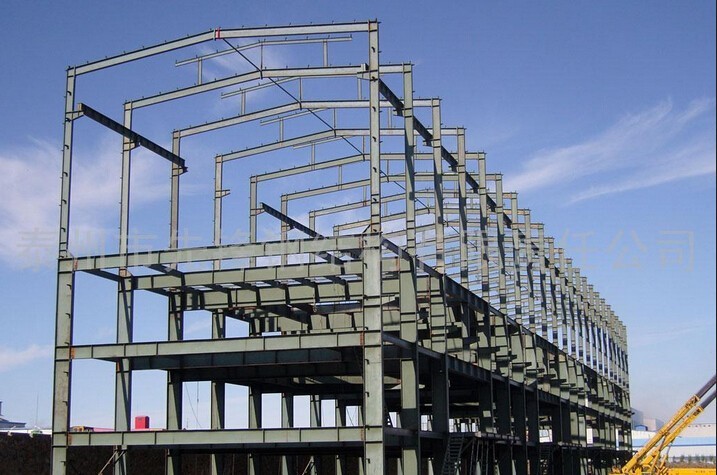


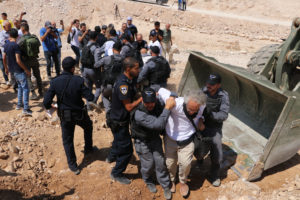

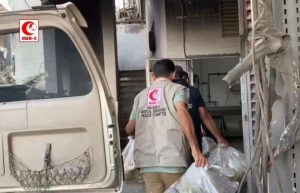




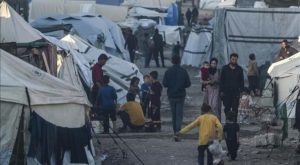

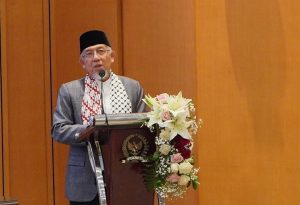





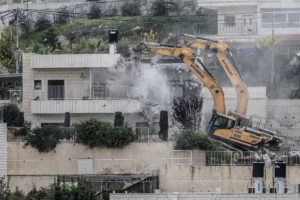








 Mina Indonesia
Mina Indonesia Mina Arabic
Mina Arabic